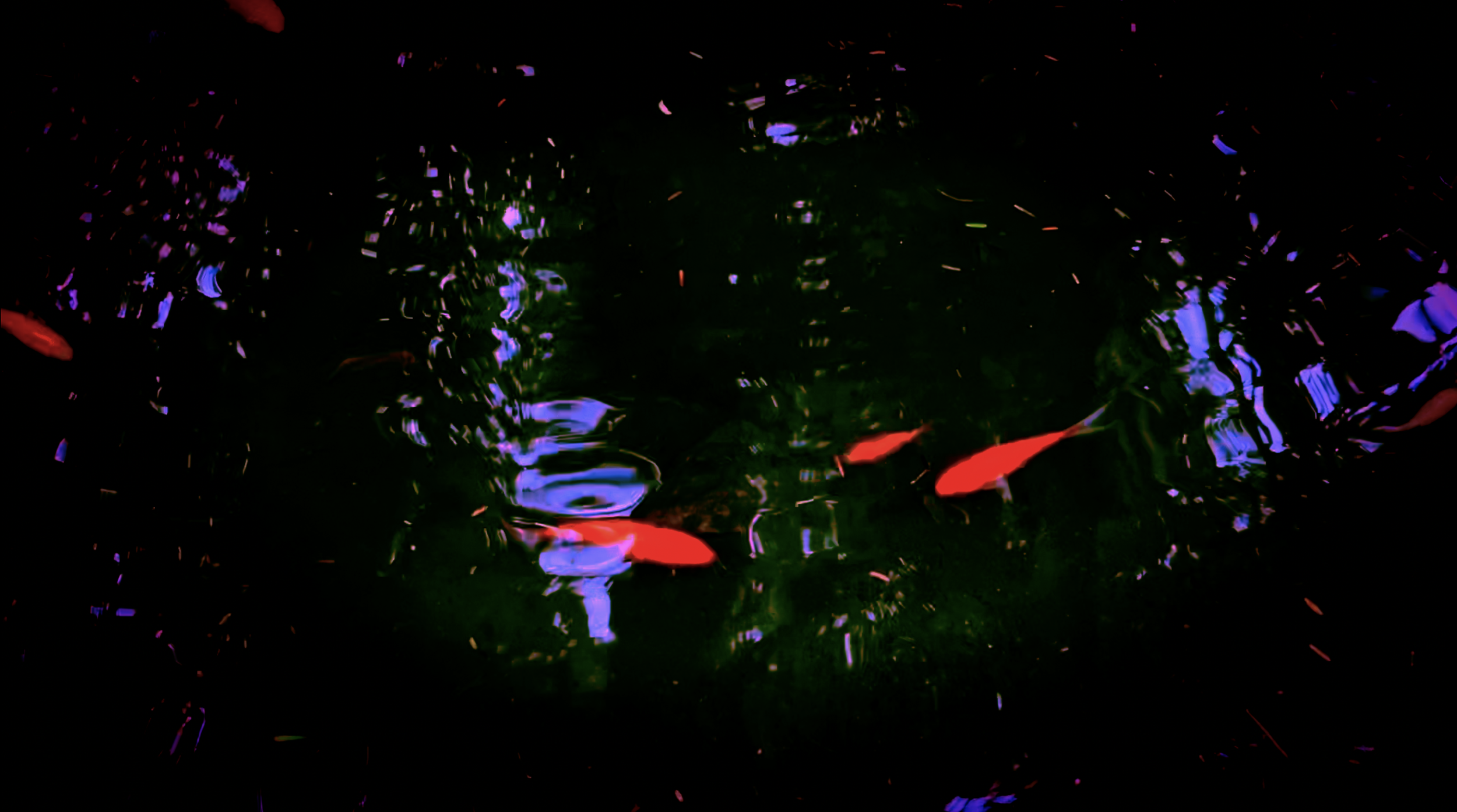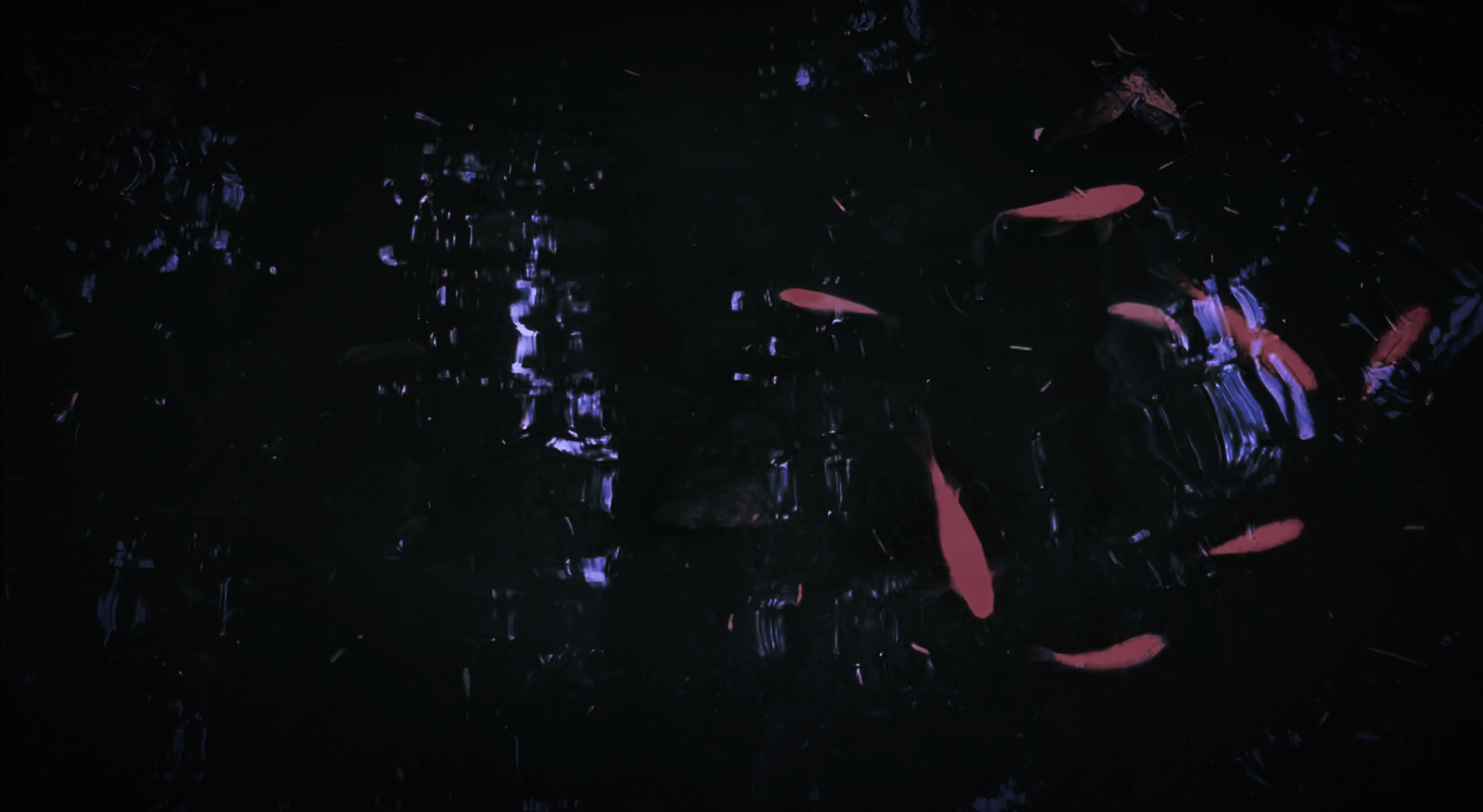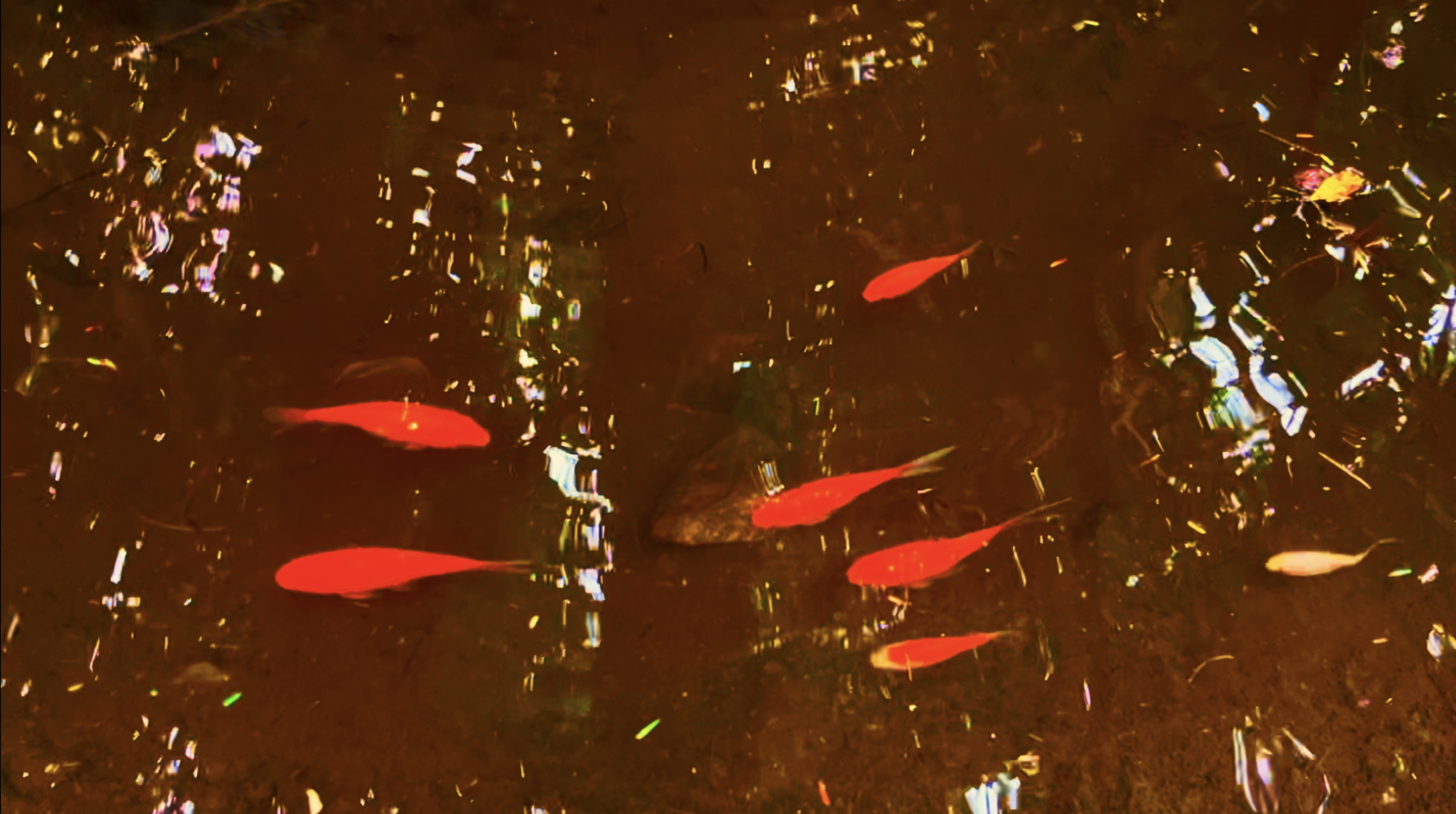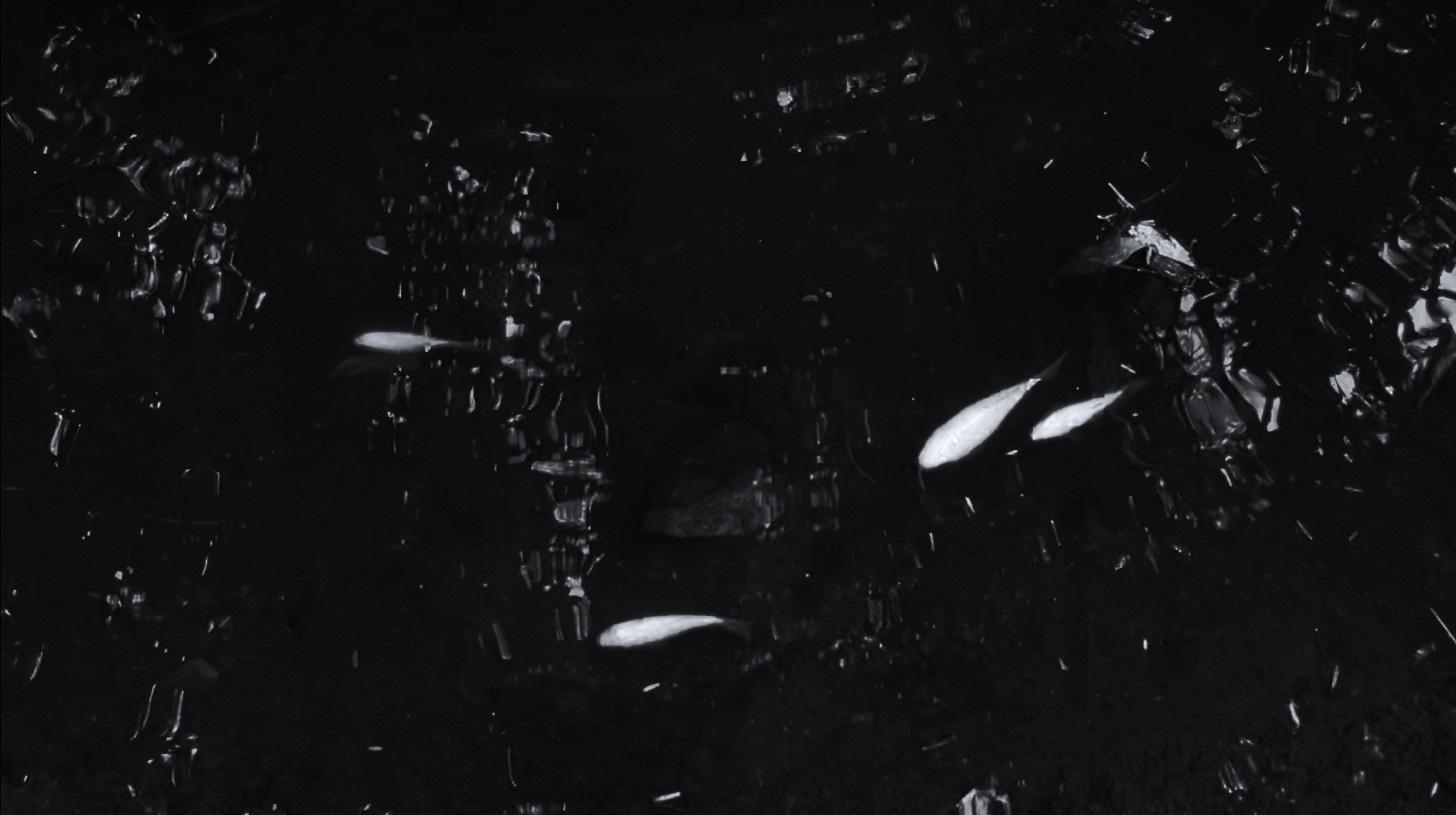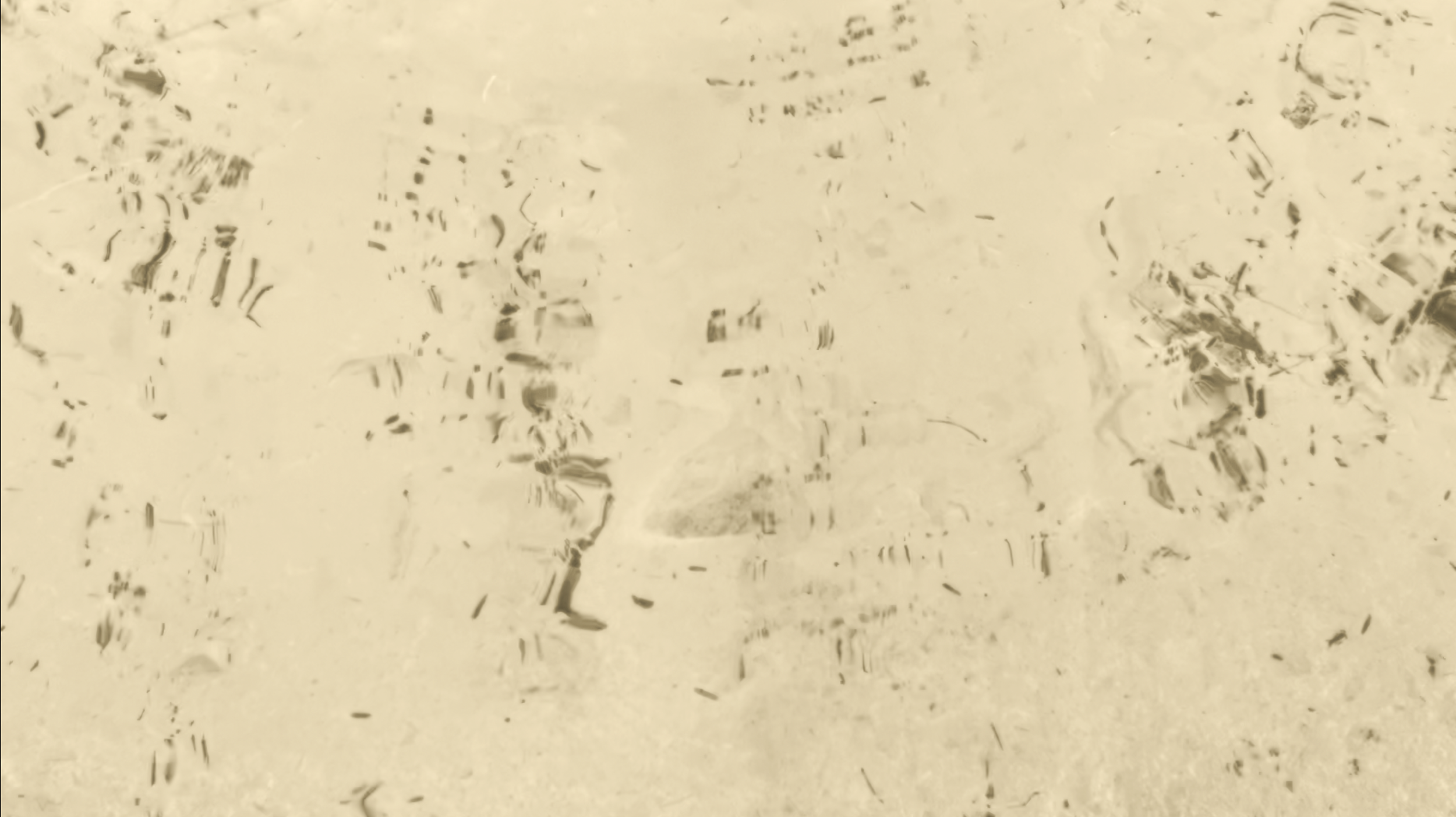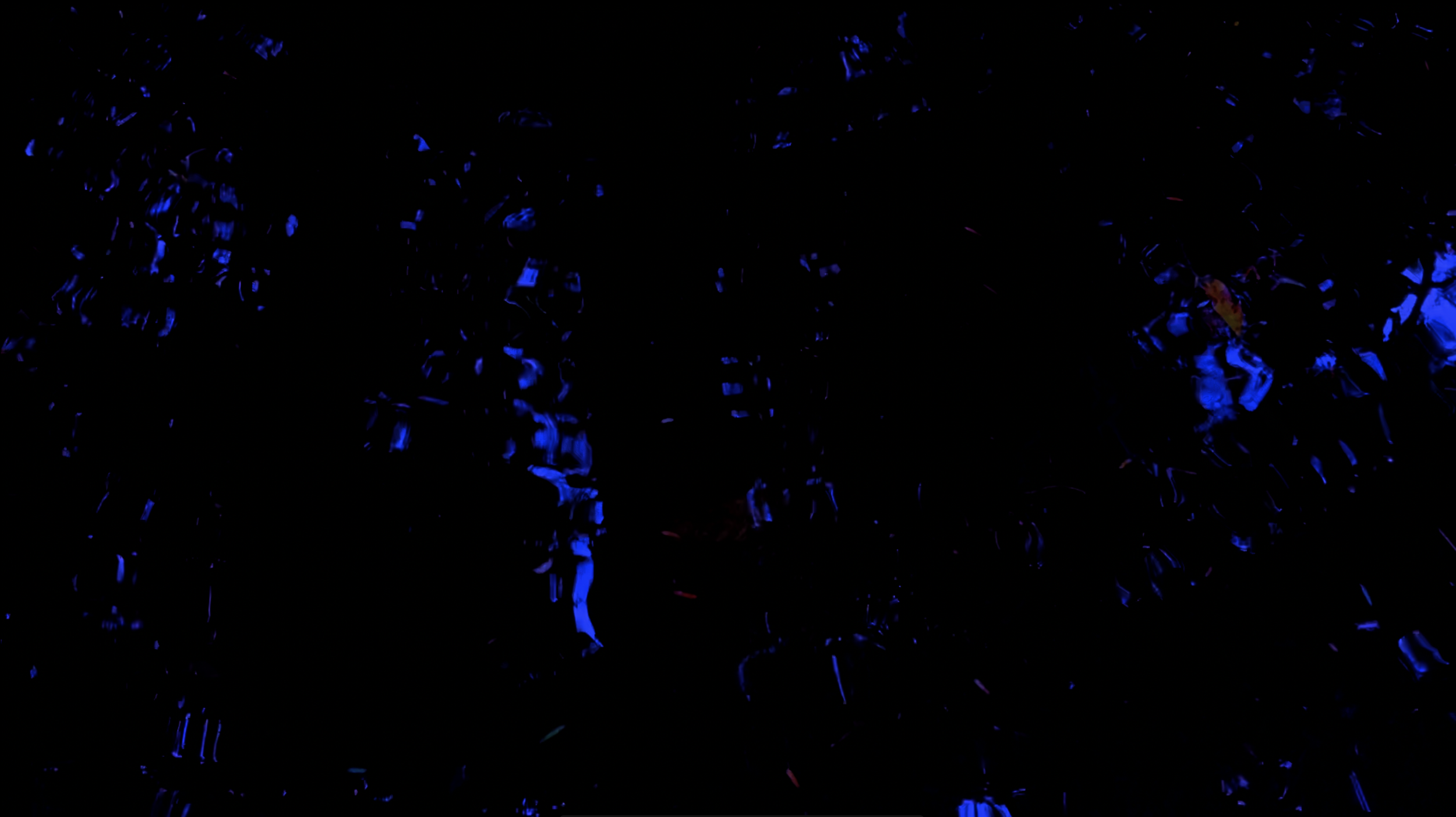My Composing Process: "dreaming of fish" (2023)
Dear Readers,
We have arrived the seventh part of my “little pieces of improvised sound” album. I call this piece “dreaming of fish” and it sonically depicts a surrealist day dream about goldfish in a pond.
Let’s dive into my composing process.
Improvising Yields Great Results
All of my pieces begin with a blank slate. In this case: a blank Logic Pro session. No instruments. No plan. That’s how I role.
I am a proud user of Spitfire Audio LABS. A terrific resource of free virtual instruments. I highly recommend. Pretty much every one of my pieces has at least one LABS instrument. For this piece, I began with the LABS Synth Strings- Strings & Brass Pad. And by “began” I mean just pressed record and played for about a minute and a half.
I tried to work in odd dissonances and “wrong” sounding notes to add tension. I honestly couldn’t easily notate down what I’ve written here, but I think of it more as a musical gesture. It formed the foundation that the rest of the piece was placed onto. If you listen with headphones you can hear that the pad travels from the left to the right side of the stereo image. I added this movement in by hand with the goal of giving the instrument movement.
On top of this gesture I did another gesture: the Spitfire LABS Soft Piano. For reference, both of these isolated tracks that I’m sharing have FX on them. Specifically: Pitch Shift (a light 5 semi tones down) and being fed through a Rotor Cabinet. This gives them both a slightly muted and psychedelic feeling.
When I performed the piano, I did so without thinking about the notes I was playing. It was a reactive performance to the Strings and Brass Pad, feeding off of it’s energy like I was performing live with myself. After listening to both parts together, I saw the potential in a piece and continued on by adding more elements.
Adding Some Bass Elements
I dug further into Spitfire LABS. Discovered the Bells Swarm library with a wonderful collection of glockenspiels, vibraphones, dinner bells and such. So I played in a vibraphone, playing the bass notes for the piece (C-Ab-G-F-Eb-C). So a descending line. I doubled this with the dinner bell (isn’t that a great sentence?).
I still wanted a larger bass sound, so I picked out another library I haven’t used yet: The Uilleann Pipes. I took out the drone effect and just had the treble sound double the bass progression. I love this library because you can hear the pitch shifting as the note extends. It feels very “live”. I then added a contrabass bassoon and two other Foghorn drones (entering in halfway through to add some weight to the peak of the piece).
It was at the addition of the bass notes that the scope of the piece became cleaner in my mind. Each bass note signaled a new idea. They anchored the otherwise indiscernible improvised tracks and made the deliberate musical gestures. And from there the piece truly flowerd.
A Distorted Clarinet And Other Instruments
The clarinet changed this piece. I knew I needed a main melody of some kind, so I immediately thought of the clarinet (one of my favorite woodwinds, behind the flute). Utilizing the clarinet from Spitfire Studio Woodwinds, I improvised a melody that played for the latter 3/4ths of the piece. It enters in when the bass notes hit the Ab. I did a rough notation of the first part of the melody below:
Music-theory-wise, we can see that this begins in the key of Db major with a raised 4th (the G natural). This is the Lydian mode, used frequently to great effect by Claude Debussy. When placed over the Ab, we can hear the fifth of the Db major scale. I love the subtle dissonances in this solo. For example, in the third measure it hits a D natural, even though it had established two measures prior that it was in Db. The other important thing about this melody, and about this piece in general, is that there is no clear sense of time. I didn’t use a metronome at any point during this composing process, which lead to fascinating solos like this clarinet.
I ran the clarinet through the Double Dragon distortion in Logic, in addition to an exciter and a spreader and some reverb. The result still has the tonal quality of a clarinet, but drastically distorted to the point that it almost sounds like a human voice.
I initially had the clarinet solo extending all the way to the end, but I found the distorted sound a bit too abrasive to exist the entire rest of the piece. So I added in other instruments and took out the clarient for the next melodic section. In its place were a muted harp, an autoharp and later a violin. One of my favorite melody sections coincides with the entrance of the violin solo:
At this point, the surrealistic touches reach an impressionist peak, and coincides with an important moment in the video (more on that later). Due to the lack of a metronome, this part feels so free, like it is flying. Also the addition of another beat in the second measure (making it a 5/4 bar) adds to the freeing nature of it. Finally, I added a crazy French Horn line at the start of this section. Using the trill (major second) instrument from Spitfire Studio Brass, the crazy chromatic line feels like an exhale of breath:
The final instrument elements are four different string tracks: Violin 1 and 2 playing flautando (playing over the fingerboard), and cellos playing sul tasto (over the end of the fingerboard) and harmonics. I completely improvised these lines and they are frequently at odds with notes elsewhere in the piece, creating interesting dissonances. For the flautando strings, I used the 4A and 4B parts in Spitfire, meaning that only four players are playing, giving it a more intimate sound.
Crafting A Soundworld
Like with the other pieces in my “little pieces of improvised sound” series, I incorporated soundscapes recordings of mine into the soundworld of “dreaming of fish”. I used the following recordings:
Horse Trotting (Kennett Square, Pennsylvania): I recorded a horse trotting in a stable for a short film earlier this year. I took two different recordings of the trotting horse and layered them on top of each other. To the ear, it sounds a bit like a human running. I like the ambivalence of the sound.
On Top Of The Opera House (Oslo, Norway): While in Norway for a weekend in June, I went on top of the beautiful opera house which overlooks the city and recorded a short field recording with my iPhone. I used the EQ to take out the lowend so that most of what you hear are some people talking and seagulls.
Oslo Airport (Oslo, Norway): While waiting at my gate at the airport north of Oslo, I put my Zoom mic on the floor and recorded 25 minutes of the airport. I got people arriving at a nearby gate, murmuring, and also a maintinence working emptying trash cans. I think that is the sound that I used here in this piece (you can hear it right atthe beginning).
Crickets At Night (Branch Lake, Maine): While in Maine in August of 2023 I got a number of terrific recordings. For this recording, I put my mic right next to some crickets during the evening and got a long recording. Love Maine crickets.
Pamlico River At Night (Pamlico Sound, North Caroline): In summer of 2021. my family and I went to North Carolina for vacation. I got a number iof great recordings (including a dramatic thunder clap). This recording was done at night in the backyard overlooking the water. Lots of crickets and cicadas.
Roslin Glen Clearing (Roslin, UK): I recorded this in March of 2020 while studying in Edinburgh. Roslin Glen is a gorgeous country walk with idyllic natural surroundings. This was recorded, I believe, in a large clearing when these gorgeous birds were singing. I only used the high frequencies of this recording and you can just make out the high pitched bird calls.
Farm In Ohio (Christiansburg, Ohio): My family has a farm in Ohio and I recently recorded some terrific cricket sounds by the barn. They were all singing almost at the same pitch and the sound was brilliant.
You can hear the soundscapes isolated below:
Another key for utilizing soundscapes is to shape them. In Logic, I adjust the volume level of each track throughout the piece so bring some forward at moments and have some recede. This way, the soundscapes can respond to the shape of the piece.
The Mixing Process
I did something different during the mixing process for this piece. I divided up the different musical parts, opting to have every instrument except the clarinet, muted harp, violin solo and flautando violins be sent through a different audio bus (signal path) and then sent to stereo. On that bus I added the rotor cabinet, pitch shift and reverb. The reason I did this was to meld all the sounds together and distort and mix them up as a unit. The instruments I didn’t run through the bus therefore stood out more in the mix. That is why the clarinet is so clear and why the flautando violins sound like they are right in front of the listener’s face.
I also automated the pitch shift (in cents) for the bus so that it changes pitch throughout the piece. This gives it an organic and performative edge.
Filming Fish
My family has a small pond in our backyard that we keep eleven goldfish in. One day recently I set up a tripod with my phone facing down towards the pond and left it there for 3.5 minutes. The fish languidly swam around, in frame and then out of it, during that time. I knew that I wanted to use it for a piece, but didn’t have one at that time.
As I was putting this piece together I felt like it could meld perfectly with the fish. So I went into iMovie, dropped a sketch of the music in and tried placing it over different parts of the video. On the second attempt I landed at the perfect timing. I wanted to begin with no fish in frame and then start with a fish entering. When I lined it up with that specific moment I realized that later fish movements and entrances lined up with hits in the music. Perfect!
My one issue was that the impressionistic moment that I discussed earlier, with the violin entering, lined up with no fish in the frame. That wouldn’t do. I decided to experiment with layering another moment in the 3.5 minute video (when fish were in frame) over the empty looking pond in the final video. So I faded in the fish clip over the empty clip and it felt like a reverie.
The final element was the use of colors to convey emotion. I experimented with this in “the waves shape the pebbles like clay”. For this piece I wanted to gradually lose color until the reverie occurs. So it begins with a vignette of blue and when the fish and music enter it becomes fluorescent with sharp contrast. I love how bright the orange is on the fish, they appear painted like in a Matisse painting. Then I gradually take the color away, arriving at black and white (the fish looks like x-rays). When the reverie begins, the fish clip is edited to have a lot of warm tones, to contrast with the black and white image. When the memory ends, it is black and white one more. As the piece draws to a close I do a quick change to green water and bright orange for the fish and then it changes entirely to a tan x-ray look with the fish barely discernible. The piece ends with a dark image with just a few blue highlights.
Each one of the color changes lines with with a moment in the music. These moments are changes, gestures and instrument entrances. The result is a film that feels tied to the music. Almost as if they are dancing together.
For the album cover for this piece, I took an image similar to the second one above and placed it in Canva. I utilized the liquify function again (I love that one) and ended up with a surrealist, abstract result. The fish break down completely and instead look like red ripples in water. I added some fun text in bright green and that is the album cover.
Conclusions
This was a really fun piece to compose. Like my other pieces in the “little pieces of improvisation” series, I entered into the composing process without fully knowing what I would end up with. The piece took shape as I layered more and more elements together and especially when I started editing the video. It was all a process of discovering, which is one of the reasons why I find these projects to be so enjoyable to do.
Thank you for reading. If you have any questions about this piece, feel free to email me at nicholasescobarcomposer@gmail.com.
Your’s Musically,
Nicholas Escobar
The Logic Pro session for “dreaming of fish”
This are all the MIDI notes for the piece.





